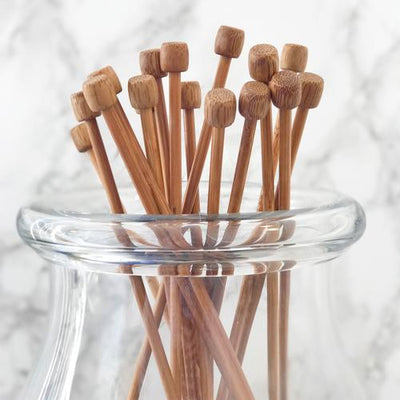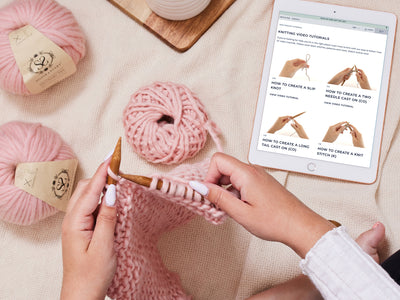
Understanding Yarn Fibres
2 min read time
An introduction to the woolly (and not so woolly) stuff we love so much!
Did you know, yarns aren’t always made of wool? A yarn can be created from all sorts of fibres, from animals, to plants, and synthetic materials. If it can be spun into a thread, it can be used for crafting! Read on to find out a bit more about just a few of the many types of yarn fibres you might come across on your crafting adventures.
Wool yarns
Possibly the most common type of yarn fibre used by crafters, wool is warm, durable, and super versatile. Wool comes from animals such as sheep, goats, and alpacas, which makes it a sustainable material (the animals’ fleeces regrow each year!) and a great temperature regulator. It’ll keep you warm in the winter, and helps you to stay cool and dry in the summer as it absorbs moisture.
Some types of wool can be a bit itchy against the skin, but others are well-known for being super soft - perfect for baby garments! Wool can also easily be cleaned if it gets stained, making it a great choice for kid’s garments too. Find out how to keep your creations clean and fresh with our washing guide.
Merino wool
Named after the breed of sheep it comes from, merino wool is known for being super-soft, and hypoallergenic, making it a popular choice for baby garments, and for people with sensitive skin.


Cashmere wool
This soft, fluffy yarn comes from cashmere goats, and can be quite delicate. It’s a great yarn for sweaters and scarves as it’s very warm, but can be expensive to buy. You’ll commonly see yarns with a cashmere blend - meaning the mix of fibres include cashmere. This helps to strengthen the yarn, and to make it more affordable than pure cashmere yarn.

Alpaca wool
Alpaca wool is known for being one of the warmest wools - making it perfect for sweaters, scarves, hats and gloves. It’s naturally water repellent, and very soft, and (as the name suggests) comes from alpacas!
Mohair wool
Mohair is considered to be a luxury fibre, and comes from the fleece of Angora goats. It’s light, fluffy, and very soft, making it the perfect extra layer on a chilly day.
Other natural fibre yarns
Cotton yarn
This yarn is incredibly versatile - you can use it to create summer garments, as well as for projects such as amigurumi, face cloths, placemats, bags, and shawls. Cotton yarn is light, strong, and breathable, and is available as a yarn on its own, or mixed with other fibres as a cotton-blend.



Jute yarn
Jute is an environmentally friendly fibre, and is a great choice for making homeware and accessories, such as dishcloths, and shopping bags.

Silk yarn
Silk is a very strong natural fibre and as a yarn it can be shiny, and a little slippery. It’s light and cool to the touch, making it the perfect choice for summer garments.
Bamboo yarn
Bamboo is a soft, breathable yarn fibre and can commonly be found as part of a cotton blend. Similar to cotton, the slight weight to bamboo yarn means it’s a great choice for projects that need a little drape to them, such as shawls, or cardigans.
Synthetic yarn
Acrylic yarn
This is a man-made yarn and tends to be cheaper than most natural fibre yarns. It can be used to create blends with natural fibres such as cotton, or wool, and because it’s affordable, It’s ideal for beginner crafters to give it a try!



Top up your stash with some new yarns, and share your photos with a community of crafters on Instagram and Facebook.
















